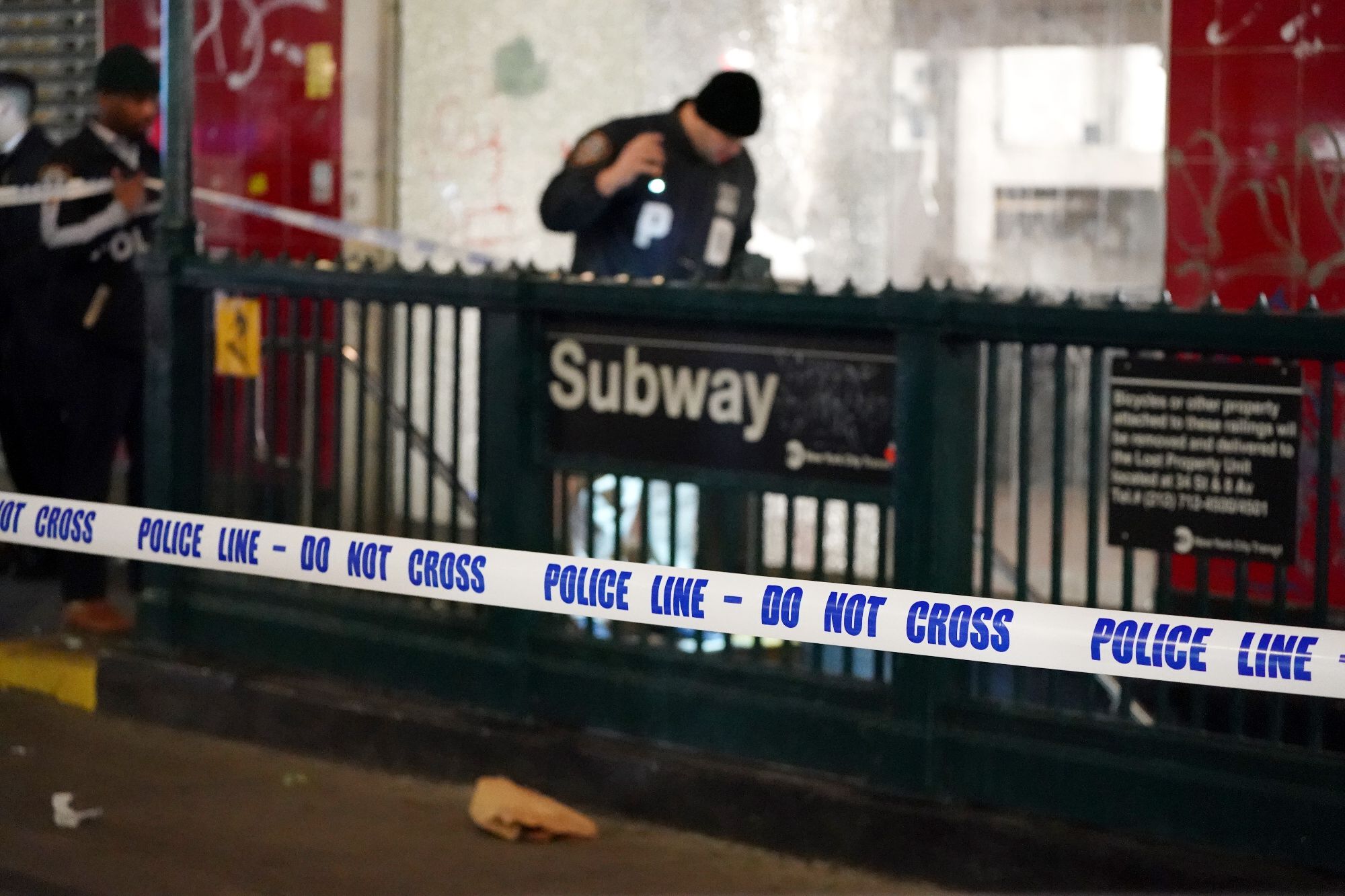
After every violent subway crime, the New York Times tells us not to worry: Subway violence is “perception,” not reality.
The Adams administration has joined the gaslighting, with officials promising us last month that things were getting better; we just didn’t know it yet and had to trust them because we didn’t have the data.
Now we have the stats, and they’re bad.
How “rare” is subway crime? It’s so rare, the Times has to keep reminding us so.
In mid-March, after Gov. Hochul deployed the National Guard underground, the paper reassured us this move was silly — “dramatically violent” incidents are “rare.”
A week earlier, another Times piece, rattling off four recent attacks — stabbing, hammer, slashing, bottle — told us they’re “rare.”
In February, after the year’s third random subway murder, the Times informed us (twice): “Killings on the subway are rare.”
Earlier, after 2024’s second random subway murder, the paper told us underground violence is “especially rare” and, for good measure, “especially unusual.”
In January, after the year’s first random subway murder, we learned such subway shootings are — you guessed it — “rare.”
The Adams administration has seized on this just-an-aberration take.
In February, after the three subway murders in six weeks, NYPD transit chief Michael Kemper assured the state-run Metropolitan Transportation Authority things were getting better.
Mayor Adams has “deployed an additional upwards of over 1,000 uniformed officers into the transit system every day since the beginning of this month,” he attested, in a “similar strategy to how we reversed the crime trend last year.
It seems this tremendous investment is immediately paying dividends,” showing a crime decrease of 18% percent compared with the previous February.
We had to take his word for it, but no longer: The February numbers are out, for Monday’s MTA board meeting.
Yes, it’s true, total felonies were down 15% in February compared with last February.
But serious violent crime — the crime people are scared about — wasn’t down.
In February 2024, transit riders or workers suffered 76 serious violent crimes: two murders, one rape, 38 robberies and 35 assaults.
That’s one more serious violent crime than in February 2023.
If this is the result the Adams police “surge” is getting, no wonder Hochul sent in the guard.
(In fact, police are enforcing the law, with record numbers of subway arrests and summonses; it’s just that with revolving-door justice and mental health, the law isn’t staying enforced.)
The only crime that fell was grand larceny, nonviolent theft, from 98 to 70.
Well, so what? Pity about the murders, but 76 isn’t a high number. Isn’t serious transit crime still rare?
The salient question here is: “Rare” compared with what?
Between 2004 and 2019, it took 15 years to accumulate 34 subway homicides — the same number we’ve had in four years since 2020.
In 2024’s first two months, we had 183 serious violent subway crimes, versus 144 during 2019’s same two months, before a slew of criminal-justice “reforms,” like bail reform, fully kicked in.
That’s a 27% increase.
But it’s higher when we account for today’s lower ridership.
This year, your chance of being a victim of serious violence is about one in every million rides — nearly twice the rate of 2019, when it was 0.55 for every million.
So if you ride the subway 500 times annually back and forth to work, you’ve got a one-in-2,000 shot of being a victim of a serious, injurious or fatal crime.
But also account for how many people are going to witness that crime.
Seriously mentally ill or drug- and alcohol-disinhibited perpetrators don’t seem deterred by crowds, so dozens of people often witness their crimes.
Let’s call it 50 people who are going to be on or near the subway car or platform when a serious incident occurs — and you’ve got a one-in-40 chance of a close brush with serious, potentially deadly, traumatic violence.
Add in all the smaller incidents, including those that never make the stats — like my friend who reports he was “slapped in the head by a group of teenagers looking for trouble in a subway station” — and it’s no surprise fewer than half of New Yorkers feel safe on the daytime subways, down from 86% in 2008.
If subway violence becomes rare again, we won’t need to be told.
We’ll know it — by not being constantly menaced.
Nicole Gelinas is a contributing editor to the Manhattan Institute’s City Journal.














